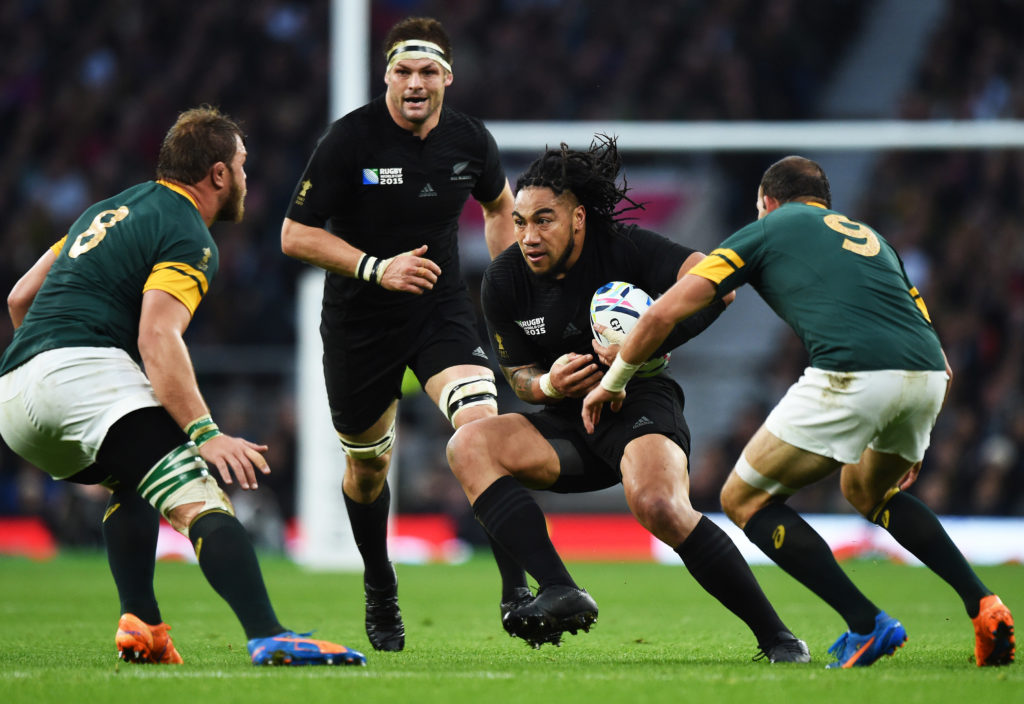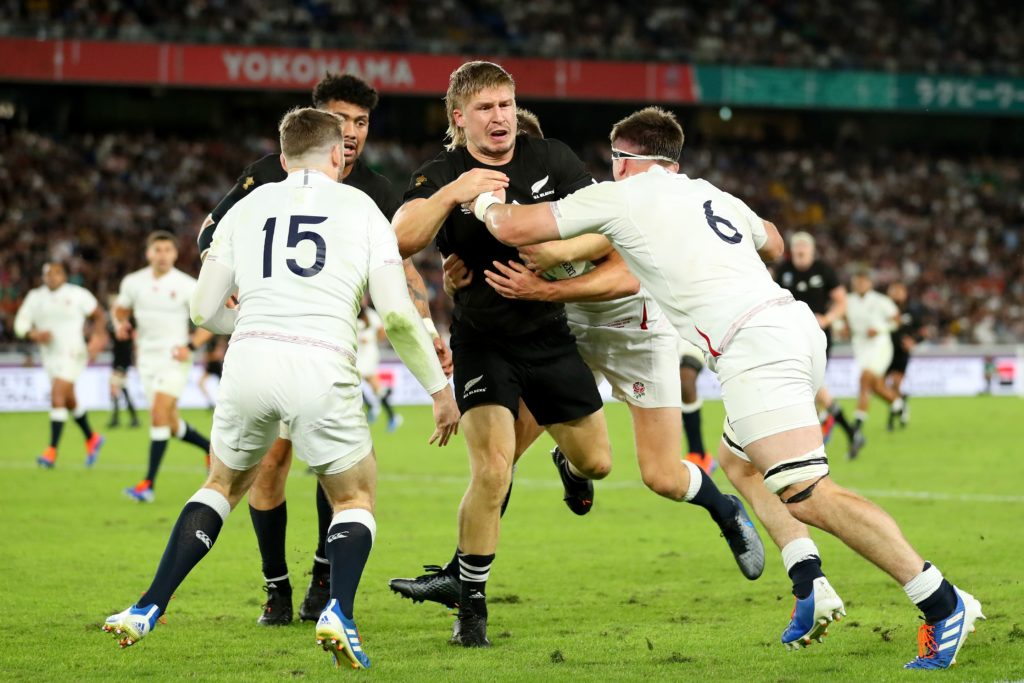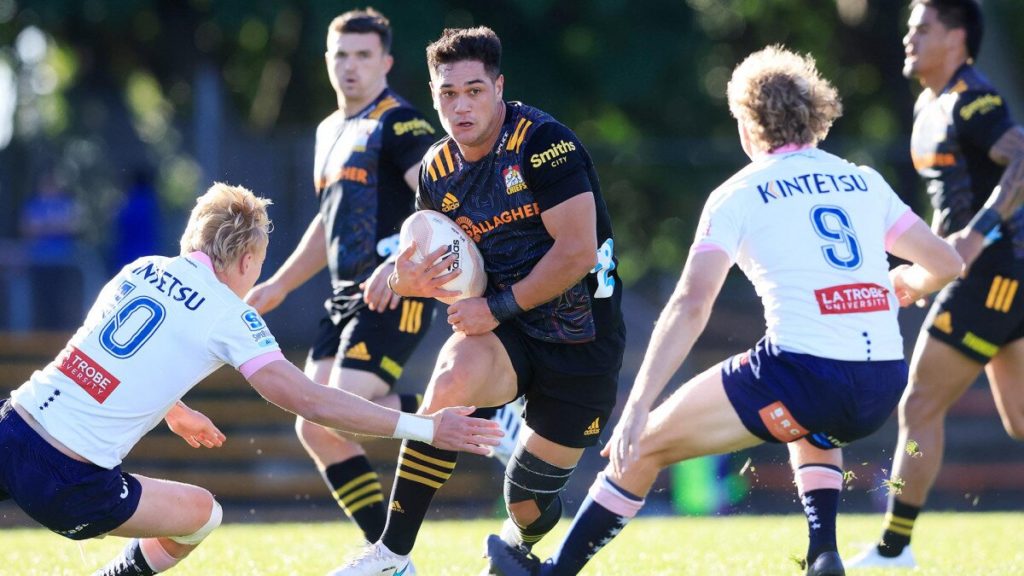It was probably the dreadlocks, whipping around like angry serpents to make it seem as if Ma’a Nonu did nothing other than collision work.
The former All Black was certainly a beast of a player: a 106kg wrecking ball who loved nothing more than to see just how tough his opposite midfielder was.
In more than 100 tests Nonu thumped and bashed his way over the gainline, giving the All Blacks priceless go-forward in the midfield. If the No 10 next to him was never sure what to do or under pressure, Nonu was always the escape valve.
Having made his debut in 2003 at centre, Nonu became the All Blacks first choice No 12 in 2008 and from then until 2015, he was on hand to smash for his country and straighten the attack.
But the thing about Nonu, is that he was massively misunderstood by the public and poorly portrayed by the media who never quite came to realise that there was so much more to him than direct running.

but there was plenty more to his play than just crashing the ball up. (Photo by Andrew Cornaga/Photosport)
The collisions caught the eye and he was definitely good at winning them, but to define him as a gainline player, or at least as only a gainline player, is to sell what was in fact an exquisite skill-set horribly short.
By 2008, Nonu was a superb distributor. He went to the 2015 World Cup as one of the best long passers in world rugby. He was equally adept, too, at offloading soft passes in traffic and there was, although he didn’t use it often, a dinky kicking repertoire in his portfolio.
Arguably, his greatest underappreciated gift was his ability to provide clear, timely communication to his No 10.
Nonu played with as much brain as he did brawn and while it’s true that he spent part of every game he played smashing into something, he spent an equal amount of time cleverly paying other people into holes he created.
At centre [Jack Goodhue] can use his innate ability to exploit space and time the pass whereas at 12, he’s often used as a battering ram without being quite big enough to be really effective at it.
All of this reminiscing is relevant because the All Blacks have lost their way with what they want from their No 12 and by extension, who to pick there and by further extension, with whom they should be partnered in the midfield.
Of all the areas in which the All Blacks fluctuated last year, midfield was arguably their least convincing positional group in terms of consistency, influence and impact.
Jack Goodhue and Anton Lienert-Brown remained the preferred starting combination, but curiously, swapped around from the 2019 preference of the latter being at 12 and the former 13.
Goodhue is a superb rugby player but it’s debatable whether second-five makes the best use of his talents. At centre he can use his innate ability to exploit space and time the pass whereas at 12, he’s often used as a battering ram without being quite big enough to be really effective at it.

Lienert-Brown for all his gifts, has been incredibly hard to place in one jersey or the other as he brings such an unorthodox skill-set. What’s probably not up for debate, however, is that he’s another who shouldn’t be asked to play that gainline role of crashing the ball up as it’s not what he’s all about.
Rieko Ioane, when he started at centre in Wellington, made some excellent breaks, using his pace to find holes, but he was caught out defensively and his distribution was poor. Or, rather, he used the ball like a wing – with it tucked under his arm and his sights set on the try-line when there were runners outside him unmarked.
And that is the problem the All Blacks have – no one is presenting them with a definitive set of skills that can be obviously utilised in one jersey or the other. They have a host of versatile, good players who can flit easily enough between both roles and in some cases, other positions all together.
Which is why head coach Ian Foster wants to find definitive answers to his midfield conundrum this year and specifically he wants to embed a No 12 who can deliver consistently on the core fronts of running the team over the gainline, keeping the attack straight and facilitating the play-making.
It’s a development stage for us to go in there and try a few different things but we’ve also got to emphasise the players we’ve picked have some great strengths in different ways and figure out how we use that.
Ian Foster on the selected All Blacks midfielders
If the All Blacks can find a 12 who can deliver all that then they have a basis at least from which they can start. That’s what Nonu built his game on at first when he came into the All Blacks.
In his early career, he brought a basic skill-set to the test arena: his value built heavily on his physicality and muscularity. As he settled and grew in confidence, former assistant coach Wayne Smith and then Foster, who came into that role in 2012, worked with him to build more into his portfolio and the passing, tactical acumen and kicking all became better.
The selection of David Havili and in particular, Quinn Tupaea signals Foster’s intent to build from the bottom up in much the same way.
The latter is raw and inexperienced. But he’s incredibly powerful and showed against the Blues just how effective he can be at finding or smashing holes in a defence. He’s a project certainly because at 1.86m and 100kg he has the explosive physicality to make a high impact and is said to be highly coachable, disciplined and professional which makes it feasible to believe the softer components can be developed over time.

This year, though, is essentially about getting back to those basics at second-five and finding a player who can provide that presence and ability to make themselves available to cart into the traffic whenever there is not much else on.
“It’s not a worry but it’s certainly going to be something we’re going to have to factor in to make sure we’ve got the ability to take the load off our 10s to make sure our drivers aren’t having to carry under that sort of pressure,” says Foster.
“That’s something we’ve got to work on. Ma’a probably started that way and then grew other parts of his game.
“It’s a development stage for us to go in there and try a few different things but we’ve also got to emphasise the players we’ve picked have some great strengths in different ways and figure out how we use that.”
His high impact game has been devastating in Super Rugby but in 15 tests, he’s never looked quite the same player and there are obviously doubts about whether he can indeed find the additional components the All Blacks are looking for in their preferred No 12.
There has been widespread media commentary lamenting the impending departure of Laumape as a near catastrophic loss for the All Blacks – that he is the No 12 they have needed all along but has been strangely ignored and yet more strangely offered an underwhelming contract to stay here beyond this year.
But the value New Zealand Rugby placed on Laumape reflects the lack of progress he has made since his test debut in 2017. He clearly brings the required running power to the role, but he’s stagnated in his growth in relation to his distribution, communication and tactical direction.
His high impact game has been devastating in Super Rugby but in 15 tests, he’s never looked quite the same player and there are obviously doubts about whether he can indeed find the additional components the All Blacks are looking for in their preferred No 12.
Havili and Tupaea may not be the long-term answers to the problem but they have been identified as better prospects than Laumape and if nothing else, Foster wants to have the security of knowing that he has at least one if not two second-fives he can trust to deliver basic packages.

“I know people talk about the midfield but it’s really been 12 we’ve been focused heavily on with Ngani’s departure and Jack’s injury,” Foster says.
“Last year we felt we weren’t settled on our midfield. It was always an area we were looking closely at. It’s been good to see David go in there. He’s shown us he can deal with the physical side of the game. We know he’s a clever player and he would’ve learnt a lot from his last episode in the black jersey about the pressure and what it takes.
“It’s equally a chance to look at a younger player. Quinn is really good at what he does. He’ll have a bit to learn. It’s good to be able to back a young player who is confident in what his strengths are. With his running, offloading and ability to create he doesn’t lack any confidence.”
Developing the repertoire of Havili and Tupaea won’t be the only midfield goal this year. If one or other of those two can establish themselves in the No 12 jersey it will start to make it easier to determine with whom they should be partnered.
Tuivasa-Scheck looks equipped to play across the backline, but many feel he’ll be best suited to midfield and possibly second-five rather than centre.
Again, think back to Nonu and his skill-set made him the perfect partner for Conrad Smith. What they individually brought sat easily and almost perfectly in combination and Foster would dearly love to have a similarly obvious partnership around whom so much of the attack can be built.
If there is a rock at 12 – a dependable line-breaker with the grunt and robustness to endlessly hit the ball up, then it creates flexibility at 13. The Nonu-Smith partnership is a guide rather than definitive blueprint and while it is inevitable that distribution and decision-making will be a higher priority at centre than they are at second-five, there is no reason why the All Blacks couldn’t pick a strike runner such as Rieko Ioane there.
And that’s the luxury Foster wants – a variety of options and different ways to set things up. Which shouldn’t be a problem as Lienert-Brown, Ioane and Braydon Ennor all prefer to play at 13. Goodhue, when he recovers, is another who has a strong claim that centre is his best position and then there is the unknown quantity which is Roger Tuivasa-Scheck who will transfer from the NRL later this year.
Tuivasa-Scheck looks equipped to play across the backline, but many feel he’ll be best suited to midfield and possibly second-five rather than centre.
It’s a year of going back to basics for the midfield. A year in which whoever plays 12 will be asked to focus on simple core tasks so the All Blacks can play simple, direct rugby that reflects the need to balance physicality with creativity.


Comments
Join free and tell us what you really think!
Sign up for free